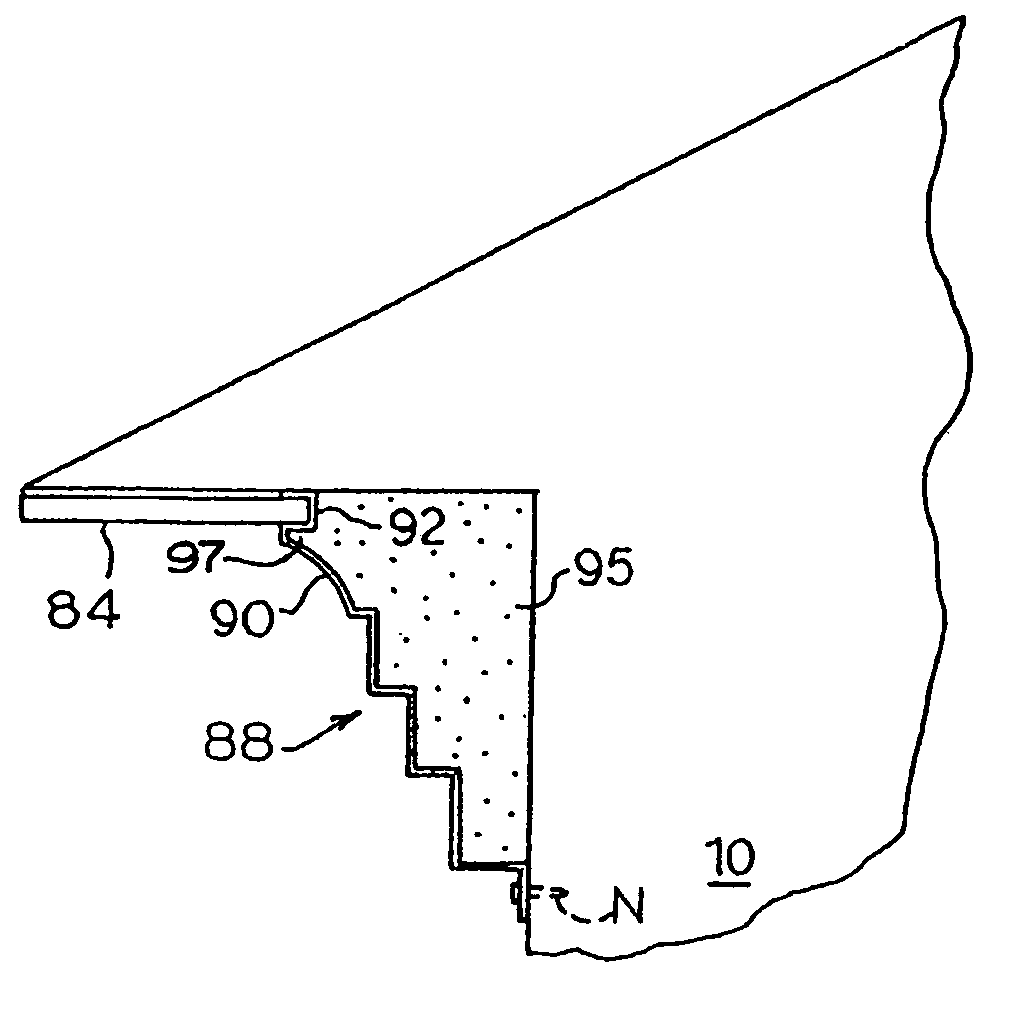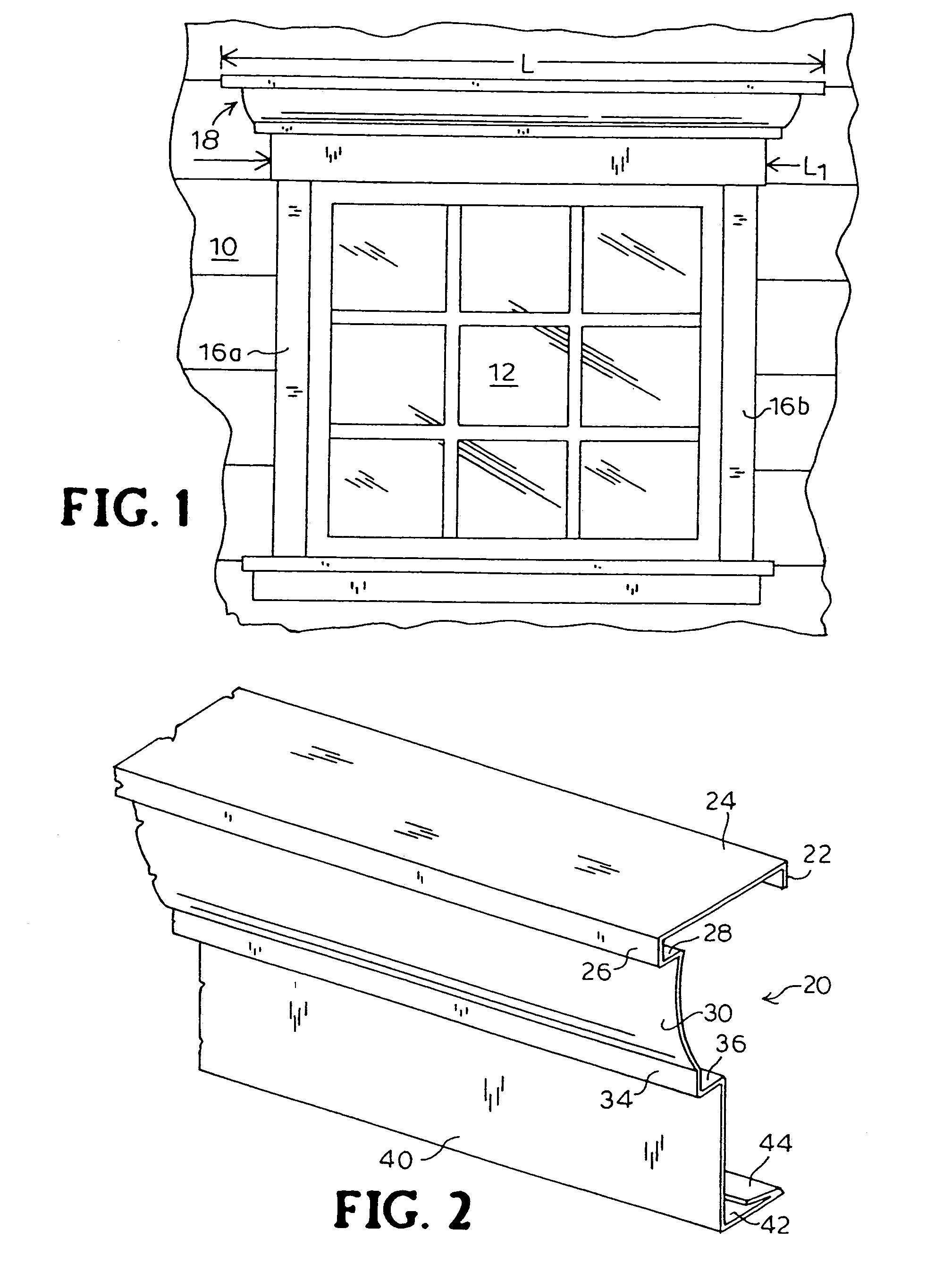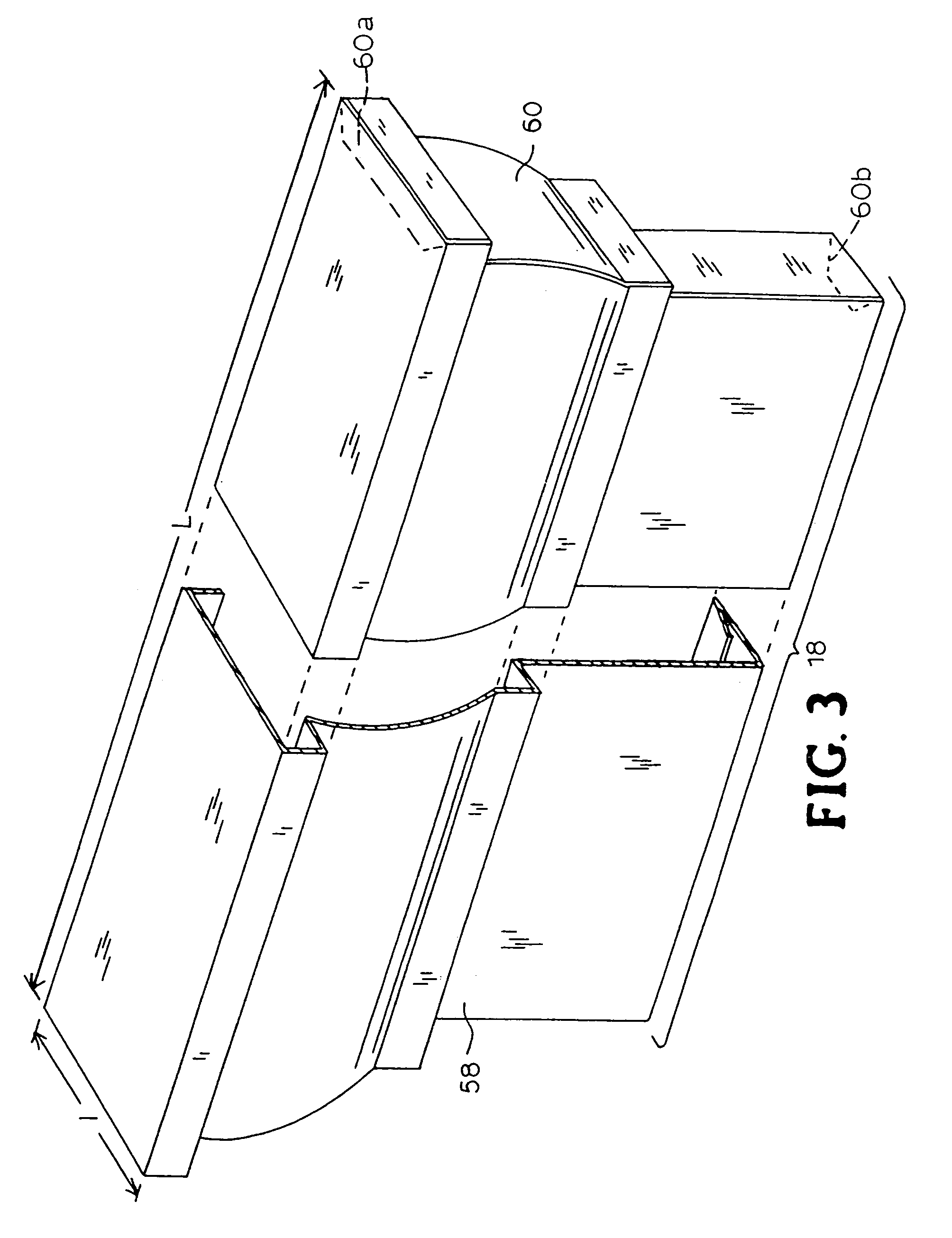Architectural trim product
a technology for architectural trim and products, applied in the direction of walls, natural patterns, constructions, etc., can solve the problems of wood having the drawback of periodic maintenance, metal or concrete plastic similar shapes that require complex molds, so as to minimize the tendency of aluminum to bend
- Summary
- Abstract
- Description
- Claims
- Application Information
AI Technical Summary
Benefits of technology
Problems solved by technology
Method used
Image
Examples
third embodiment
[0039]Referring now to FIG. 5, the invention is illustrated in side elevation view. A mounting clip 70 is formed with a substantially planar central portion, a bottom lip 72, and a top lip 74. The central planar portion of mounting clip 70 is affixed to wall 62 by any convenient means, e.g. fasteners N, and bottom lip 72 and top lip 74 are not anchored. Bottom lip 72 is formed with its lowermost part spaced from wall 62. Top lip 74 is formed with its uppermost part slightly spaced from wall 62 with an angularly oriented planar portion leading toward its uppermost part.
[0040]Continuing with FIG. 5, face trim 76 is formed to mount onto mounting clip 70. Face trim 76 has bottom hook 78, formed to engage bottom lip 72 of mounting clip 70. Face trim 76 also has top hook 80, formed to engage top lip 74 of mounting clip 70.
[0041]The assembly of face trim 76 to mounting clip 70 is illustrated in sequential steps in FIG. 5A. After bottom hook 78 of face trim 76 has been placed in engagement ...
second embodiment
[0042]Referring now to FIG. 5B, a further profile shape of this second embodiment of the invention is shown. In this profile shape, mounting clip 70 is formed similarly to that discussed and shown above, but face trim 76′ has a more exaggerated profile. Top hook 80′ and bottom hook 78′ securely hold face trim 76′ to mounting clip 70. In this manner, differing architectural styles can be accommodated using the mounting principles described above.
[0043]The face trim products shown in FIGS. 5, 5A, and 5B and described above are adaptable for a variety of interior and exterior construction components. In addition to the exterior components of crosshead, fascia, and frieze described in relation to the first embodiments of the present invention, this second embodiment is useful as crown molding, window or door casings, baseboards, and mantle pieces.
[0044]As briefly described above, a frieze, being a building component that is installed as a transitional trim between a vertical wall and a ...
first embodiment
[0051]Referring now to FIG. 8, a side elevation view is shown of a first embodiment set of forming dies 132, 136 according to the present invention. The solid line drawing shows forming dies 132 and 136 prior to closure with sheet 130 of bendable material in position with surface A painted and surface B unpainted. The dashed line drawing shows formed sheet 130′ after closure of forming dies 132, 136. The lower part of the die set consists of lower die 132, having a selected contour, for example including one or more curved sections and one or more angular sections, and is substantially elongate in a direction perpendicular to the plane of the drawing. Columns 134 support base 132. Upper die 136 is made in a matching contour to the contour of base 132. Form 136 is supported above base 132 by ram 138. Rear lip 22, bottom return 42, and grip 44 (see FIG. 2) are formed in a subsequent bending operation.
[0052]In operation, bendable sheet 130 is placed substantially flat on lower die 132 ...
PUM
 Login to View More
Login to View More Abstract
Description
Claims
Application Information
 Login to View More
Login to View More - R&D
- Intellectual Property
- Life Sciences
- Materials
- Tech Scout
- Unparalleled Data Quality
- Higher Quality Content
- 60% Fewer Hallucinations
Browse by: Latest US Patents, China's latest patents, Technical Efficacy Thesaurus, Application Domain, Technology Topic, Popular Technical Reports.
© 2025 PatSnap. All rights reserved.Legal|Privacy policy|Modern Slavery Act Transparency Statement|Sitemap|About US| Contact US: help@patsnap.com



